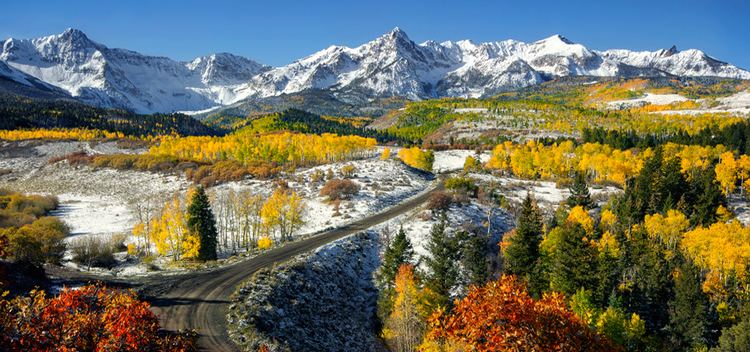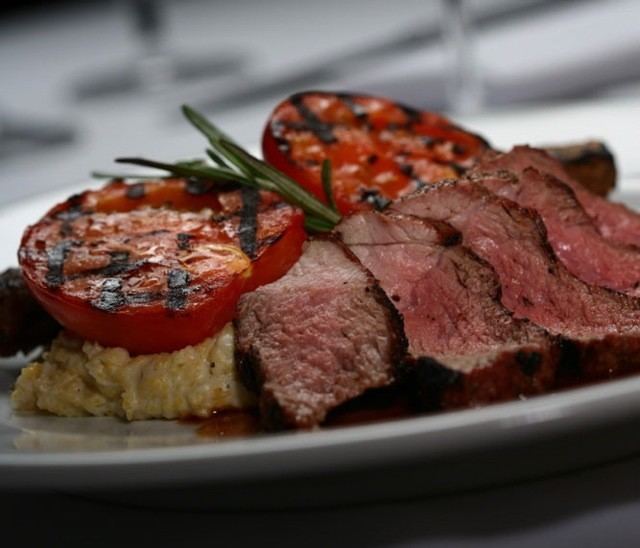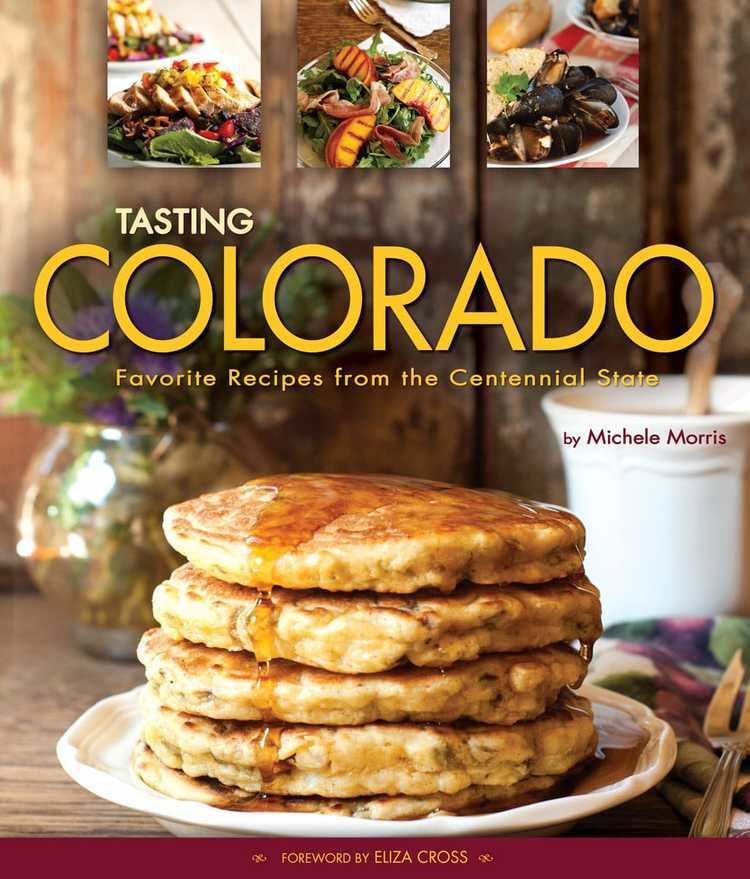Abbreviation CO Secretary of State Wayne W. Williams Area 104,094 sq mi | Capital Denver Governor John HickenlooperPopulation 5,355,866 | |
Minimum wage 8.23 USD per hour (Jan 1, 2015) Colleges and Universities University of Colorado Boulder Destinations Points of interest Pikes Peak, Garden of the Gods, Rocky Mountain National Park, Cheyenne Mountain Zoo, Denver Museum of Nature and Science | ||
Colorado ( or ) is a U.S. state encompassing most of the Southern Rocky Mountains as well as the northeastern portion of the Colorado Plateau and the western edge of the Great Plains. Colorado is part of the Western United States, the Southwestern United States, and the Mountain States. Colorado is the 8th most extensive and the 22nd most populous of the 50 United States. The United States Census Bureau estimates that the population of Colorado was 5,355,866 on July 1, 2014, an increase of 6.50% since the 2010 United States Census.
Contents
- Map of Colorado
- Geography
- History
- Culture
- Economy
- Cuisine
- A gourmet weed dinner at hunter s thompsons house
- Mexican restaurant silverthorne co 1161 blue river pkwy la perla authentic mexican food
- References
Map of Colorado
The state was named for the Colorado River, which Spanish travelers named the Río Colorado for the ruddy (Spanish: ) silt the river carried from the mountains. The Territory of Colorado was organized on February 28, 1861, and on August 1, 1876, U.S. President Ulysses S. Grant signed a proclamation admitting Colorado to the Union as the 38th state. Colorado is nicknamed the "Centennial State" because it became a state 28 days after the centennial of the United States Declaration of Independence.
Colorado is bordered by Wyoming to the north, Nebraska to the northeast, Kansas to the east, Oklahoma to the southeast, New Mexico to the south, Utah to the west, and Arizona to the southwest, at the Four Corners. Colorado is noted for its vivid landscape of mountains, forests, high plains, mesas, canyons, plateaus, rivers, and desert lands.
Denver is the capital and the most populous city of Colorado. Residents of the state are properly known as "Coloradans", although the archaic term "Coloradoan" is still in use.
Geography

Colorado is notable for its diverse geography, ranging from alpine mountains, arid plains and deserts with huge sand dunes, deep canyons, sandstone and granite rock formations, rivers, lakes, and lush forests. The borders of Colorado were originally defined to be lines of latitude and longitude, making its shape a latitude-longitude* quadrangle which stretches from 37°N to 41°N latitude and from 102°03W to 109°03W longitude (25°W to 32°W from the Washington Meridian). Colorado, Wyoming and Utah are the only states which have boundaries defined solely by lines of latitude and longitude
History
The region that is today the state of Colorado has been inhabited by Native Americans for more than 13,000 years. The Lindenmeier Site in Larimer County contains artifacts dating from approximately 11200 BC to 3000 BC. The eastern edge of the Rocky Mountains was a major migration route that was important to the spread of early peoples throughout the Americas. The Ancient Pueblo peoples lived in the valleys and mesas of the Colorado Plateau. The Ute Nation inhabited the mountain valleys of the Southern Rocky Mountains and the Western Rocky Mountains, even as far east as the Front Range of present day. The Apache and the Comanche also inhabited Eastern and Southeastern parts of the state. At times, the Arapaho Nation and the Cheyenne Nation moved west to hunt across the High Plains.
The U.S. acquired a territorial claim to the eastern Rocky Mountains with the Louisiana Purchase from France in 1803. This U.S. claim conflicted with the claim by Spain to the upper Arkansas River Basin as the exclusive trading zone of its colony of Santa Fé de Nuevo Méjico. In 1806, Zebulon Pike led a U.S. Army reconnaissance expedition into the disputed region. Colonel Pike and his men were arrested by Spanish cavalrymen in the San Luis Valley the following February, taken to Chihuahua, and expelled from Mexico the following July.
The U.S. relinquished its claim to all land south and west of the Arkansas River and south of 42nd parallel north and west of the 100th meridian west as part of its purchase of Florida from Spain with the Adams-Onís Treaty of 1819. The treaty took effect February 22, 1821. Having settled its border with Spain, the U.S. admitted the southeastern portion of the Territory of Missouri to the Union as the state of Missouri on August 10, 1821. The remainder of Missouri Territory, including what would become northeastern Colorado, became unorganized territory, and remained so for 33 years over the question of slavery. After 11 years of war, Spain finally recognized the independence of Mexico with the Treaty of Córdoba signed on August 24, 1821. Mexico eventually ratified the Adams-Onís Treaty in 1831. The Texian Revolt of 1835–1836 fomented a dispute between the U.S. and Mexico which eventually erupted into the Mexican-American War in 1846. Mexico surrendered its northern territory to the U.S. with the Treaty of Guadalupe Hidalgo at the conclusion of the war in 1848.
Most American settlers traveling overland west to the Oregon Country, namely the new goldfields of California, or the new Mormon settlements of the State of Deseret in the Salt Lake Valley, avoided the rugged Southern Rocky Mountains, and instead followed the North Platte River and Sweetwater River to South Pass (Wyoming), the lowest crossing of the Continental Divide between the Southern Rocky Mountains and the Central Rocky Mountains. In 1849, the Mormons of the Salt Lake Valley organized the extralegal State of Deseret, claiming the entire Great Basin and all lands drained by the rivers Green, Grand, and Colorado. The federal government of the U.S. flatly refused to recognize the new Mormon government, because it was theocratic and sanctioned plural marriage. Instead, the Compromise of 1850 divided the Mexican Cession and the northwestern claims of Texas into a new state and two new territories, the state of California, the Territory of New Mexico, and the Territory of Utah. On April 9, 1851, Mexican American settlers from the area of Taos settled the village of San Luis, then in the New Mexico Territory, later to become Colorados first permanent Euro-American settlement.
In 1854, Senator Stephen A. Douglas persuaded the U.S. Congress to divide the unorganized territory east of the Continental Divide into two new organized territories, the Territory of Kansas and the Territory of Nebraska, and an unorganized southern region known as the Indian territory. Each new territory was to decide the fate of slavery within its boundaries, but this compromise merely served to fuel animosity between free soil and pro-slavery factions.
The gold seekers organized the Provisional Government of the Territory of Jefferson on August 24, 1859, but this new territory failed to secure approval from the Congress of the United States embroiled in the debate over slavery. The election of Abraham Lincoln for the President of the United States on November 6, 1860, led to the secession of nine southern slave states and the threat of civil war among the states. Seeking to augment the political power of the Union states, the Republican Party dominated Congress quickly admitted the eastern portion of the Territory of Kansas into the Union as the free State of Kansas on January 29, 1861, leaving the western portion of the Kansas Territory, and its gold-mining areas, as unorganized territory.
Culture
Economy
CNBCs list of "Top States for Business for 2010" has recognized Colorado as the third best state in the nation, falling short to only Texas and Virginia.
Cuisine

Colorado is known for its Southwest and Rocky Mountain cuisine. Mexican restaurants are prominent throughout the state.

Boulder, Colorado was named Americas Foodiest Town 2010 by Bon Appétit. Boulder, and Colorado in general, is home to a number of national food and beverage companies, top-tier restaurants and farmers markets. Boulder, Colorado also has more Master Sommeliers per capita than any other city, including San Francisco and New York.
A gourmet weed dinner at hunter s thompsons house
The Food & Wine Classic held annually each June in Aspen, Colorado. Aspen also has a reputation as the culinary capital of the Rocky Mountain region.
Denver is known for steak, but now has a diverse culinary scene with many top-tier restaurants.
